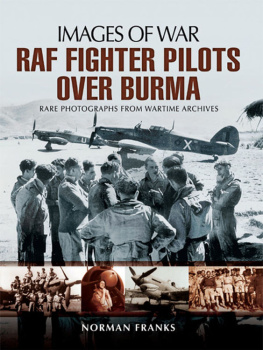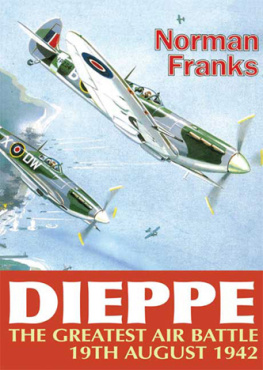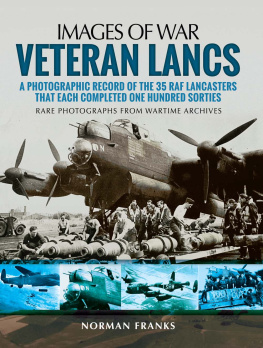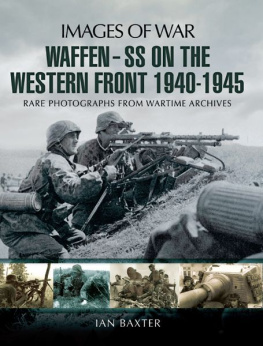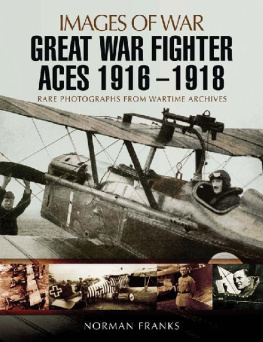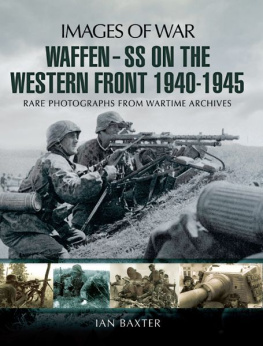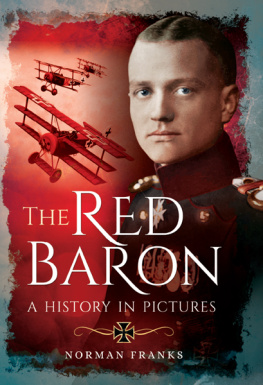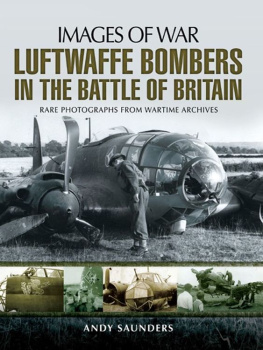
First published in Great Britain in 2014 by
PEN & SWORD AVIATION
an imprint of
Pen & Sword Books Ltd,
47 Church Street,
Barnsley,
South Yorkshire.
S70 2AS
Copyright Norman Franks, 2014.
A CIP record for this book is available from the British Library.
ISBN 978 1 78337 614 8.
eISBN 9781473832633
The right of Norman Franks to be identified as Author of this Work has been asserted by him in accordance with the Copyright, Designs and Patents Act 1988.
All rights reserved. No part of this book may be reproduced or transmitted in any form or by any means, electronic or mechanical including photocopying, recording or by any information storage and retrieval system, without permission from the Publisher in writing. Printed and bound by CPI UK
Pen & Sword Books Ltd incorporates the Imprints of Pen & Sword Aviation, Pen & Sword Maritime, Pen & Sword Military, Wharncliffe Local History, Pen & Sword Select, Pen & Sword Military Classics and Leo Cooper.
For a complete list of Pen & Sword titles please contact
Pen & Sword Books Limited
47 Church Street, Barnsley, South Yorkshire, S70 2AS, England
E-mail: enquiries@pen-and-sword.co.uk
Website: www.pen-and-sword.co.uk
Contents
INTRODUCTION
When the Japanese attacked the American Fleet in Pearl Harbor on 7 December 1941, the war in Europe was two years and three months old. Britain was just about holding its own, having been kicked out of France in May 1940, managed to survive the Battle of Britain and then the RAF had staged something of a comeback over Northern France in 1941, although not without severe losses of fighter pilots and fighter aeroplanes.
Fighting in North Africa had not gone well, with British forces retreating and advancing across the Western Desert in desperate attempts to keep the Axis forces away from the Middle East oilfields. Malta was holding off massive air attack and, like the Desert, was yet another drain on fighter aircraft and personnel. All this time anxious eyes had been looking towards the Far East, wondering if the Japanese Empire would attempt to spread its influence across the Pacific and the South Seas, even into British territory of Malaya and India itself. Burma, too, would be an obvious staging post for an assault on India and, if the Japanese headed south, Australia would also come under threat.
Despite these worries it was obvious that the war in Europe would be using most of the resources available, and even Malta and North Africa would take second place in the pecking order. Some thought had been given to the defence of Britains major base in the Far East, Singapore, but the handful of RAF and Australian squadrons based there were using a fairly antiquated fighter aeroplane, the American Brewster Buffalo. This stubby little fighter, designed for the US Navy, was more like a flying club machine of the 1930s. It was lightly armed and when examples were bought by the RAF in 1940 it was soon rejected for front-line service in Europe and sent out to Singapore. It would never be able to stand against the German Messerschmitt 109 fighter, but would be better than nothing against Japanese aircraft, none of which were thought to be serious contenders for air superiority. Even Japanese pilots were not deemed well enough trained to oppose British or American aircrew. More derogatory comments from American journalists even suggested Japanese pilots, wearing thick-lensed spectacles, could hardly see to fly! Towards the end of 1941, Curtiss Mohawk fighters, originally meant to be supplied to the French air force, were also sent out to the Far East, but they too were found wanting, although some remained active in Burma until the end of 1943.
There were a few operationally experienced fighter pilots available to go to the Far East during 1941, and shortly before the Japanese attacked Pearl Harbor, other units were on their way to North Africa to help support the latest see-sawing battle front. Some of these were quickly diverted to the Far East; it was a slow and meandering journey, but at least these units were either taking or were to be quickly equipped with Hawker Hurricane fighters. However, by the time the first of these reinforcements arrived, Singapore had already fallen, and the reinforcements, such as they were, ended their journey at Rangoon.
Another force in that Singapore region was the American Volunteer Group the AVG made up of volunteer (mercenary) airmen from the USA, both former Army and Navy pilots, who saw a chance of action and, hopefully, some monetary reward from the Chinese, who employed them. The Chinese, of course, had been at war with Japanese forces in China for some time. The Americans had Curtiss P-40 Tomahawk fighters, a very reasonable aeroplane, and the same that the RAF was also using in the Western Desert, and to good effect.
Although the AVG was set up before the US came into the war, it did not see any action until after 7 December 1941. By this time the AVG in China had been formed into three squadrons, and within days of Pearl Harbor, one of them, consisting of twenty-one P-40s and twenty-five pilots, was sent to Rangoons Mingaladon airfield.
The scene was set. The Japanese had been rushing to engage the British at Singapore and, now, Rangoon, to be followed by a planned push north across Burma, along the Bengal coast, or centrally towards Assam. India was the target. All that had stood in their way at Singapore were those few squadrons of antiquated fighters, some Blenheim bombers and a few Westland Lysander army-cooperation aeroplanes. One Japanese ally was the fear-factor. Their brutality in China was becoming well known and however determined the British soldiers were to stem the Japanese advance, they were on the back foot from the start, with poor equipment and with the thought in the back of their minds that to be captured by this ruthless enemy was not to be contemplated.
When the Japanese did strike it was still something of a surprise when Japanese naval air power sank two Royal Navy capital ships with seemingly consummate ease on 10 December 1941 HM Ships Prince of Wales and Repulse off the Malayan coast. Fighters had been sent out to assist 453 Squadrons Buffaloes but they arrived too late. The plan had been to inform this squadron should the ships leave harbour, but the RAF were not alerted before they sailed. No doubt the Navy felt quite capable of looking after themselves without the need for the RAF.
Allied forces would be going backwards from now on for several months and it would be well into 1942 before they were able to stabilise some sort of defensive front. However, the Japanese still intended to force the issue and head towards India. British and Indian troops stood in their way, but it would be the RAF, by supporting and sustaining them, that would enable them to hold and fight back.
CHAPTER ONE
Caught on the Hop
While the thought that Japan might well start aggressive moves in 1941, or perhaps 1942, when they began on Sunday, 7 December 1941, with the surprise and unannounced attack on the US Naval Base at Pearl Harbor, Hawaii, it came as a complete shock. The only stroke of luck on that day, the day President F. D. Roosevelt called a day of infamy, was that the American aircraft carriers were at sea. Had they been in Pearl Harbor and been sunk or seriously damaged in the attack, it would have been a disaster, and the war in the Pacific would have turned out very differently in 1942.
The British, too, were completely surprised when, on 8 December, the Japanese made an initial troop landing at Kota Bharu, Malaya, then made an air raid upon Singapore and Hong Kong as well. On the 10th, Japanese aeroplanes attacked and sank two British capital ships, the Prince of Wales and Repulse , off the Malayan coast, an event that resounded loudly, not only locally but to their Lordships at the Admiralty in London.
Next page
